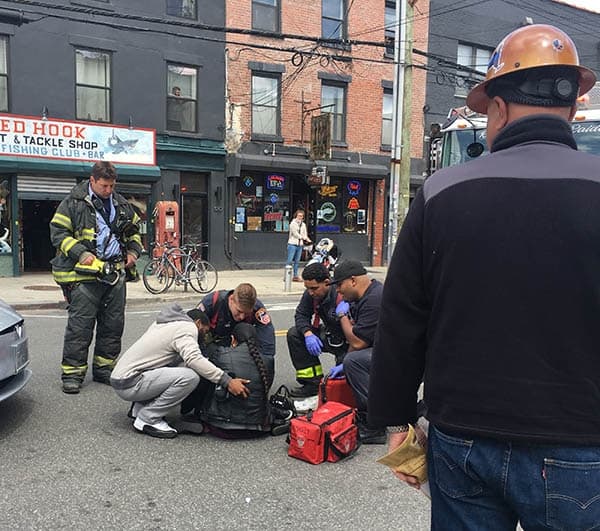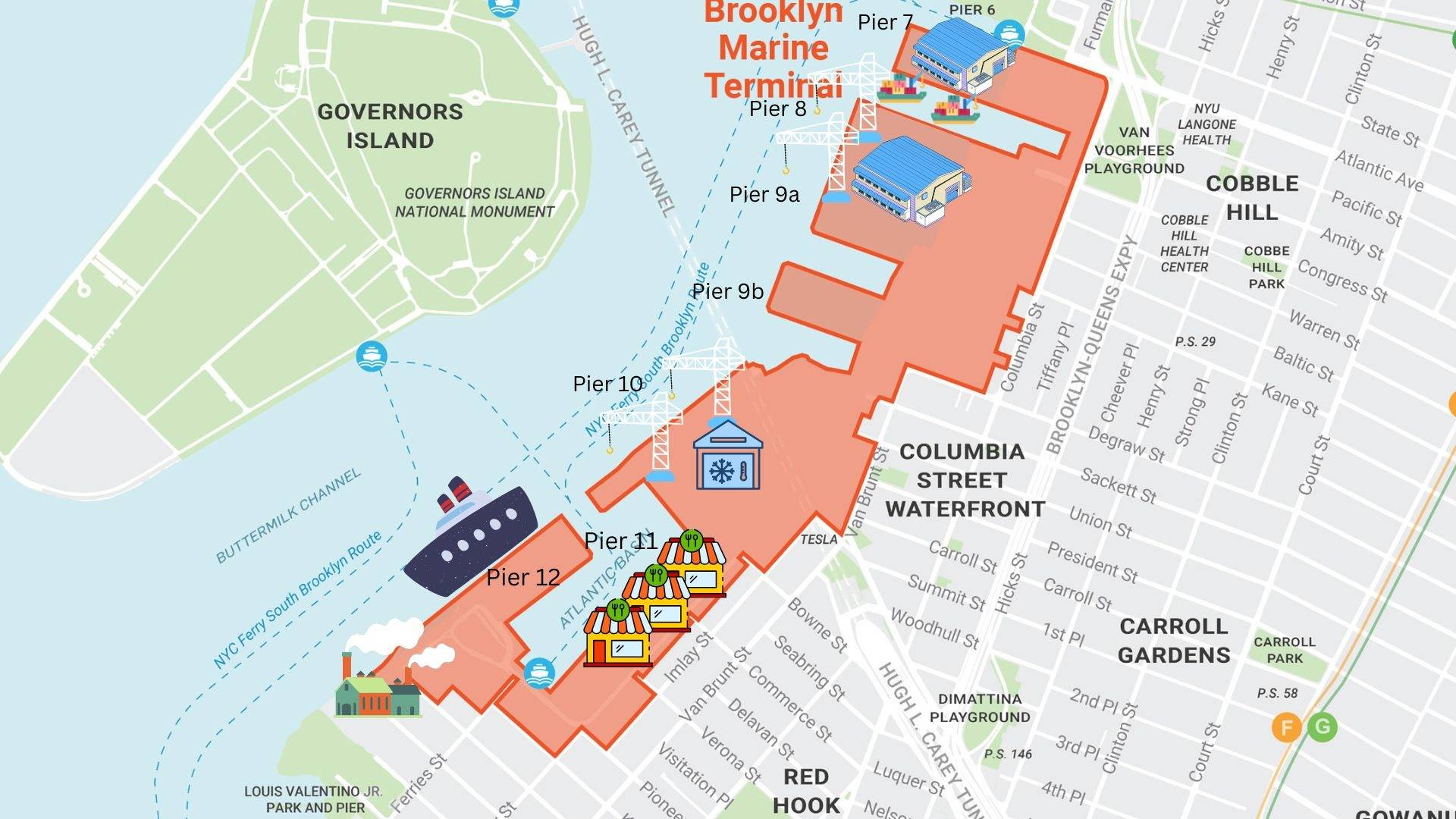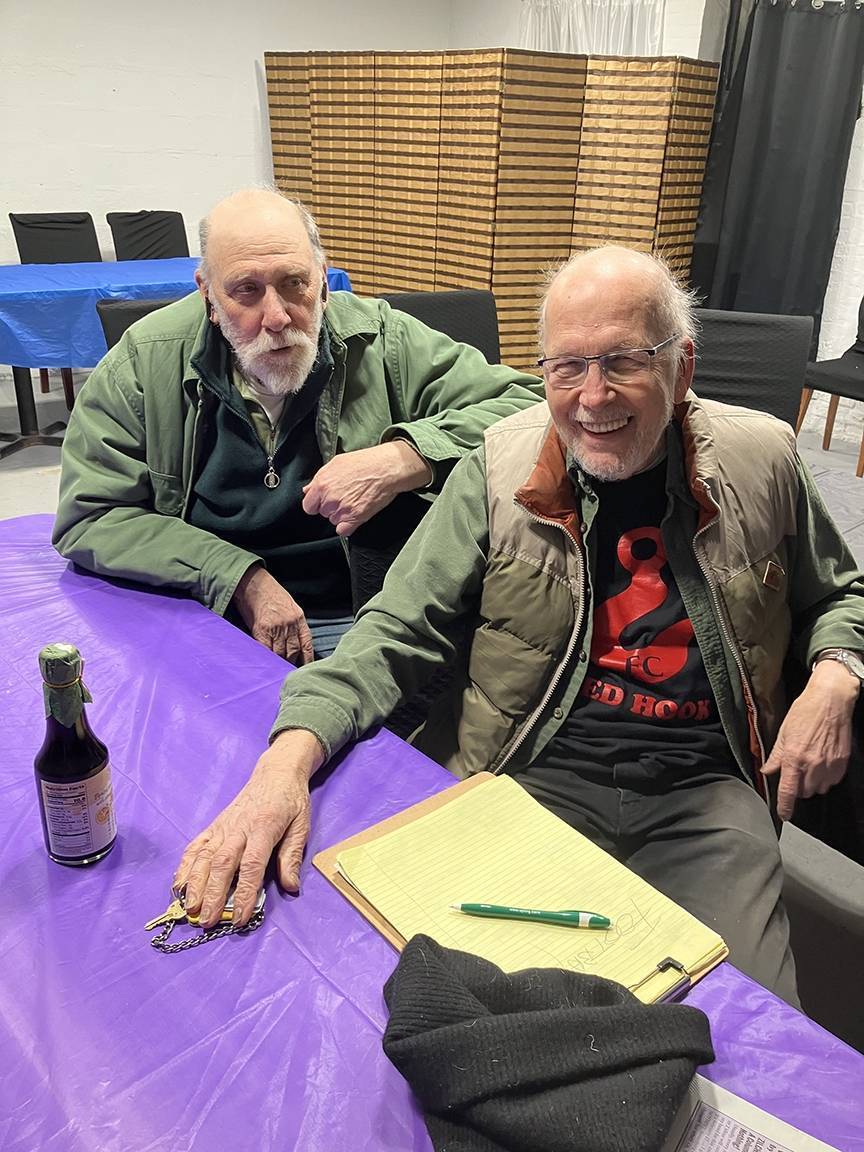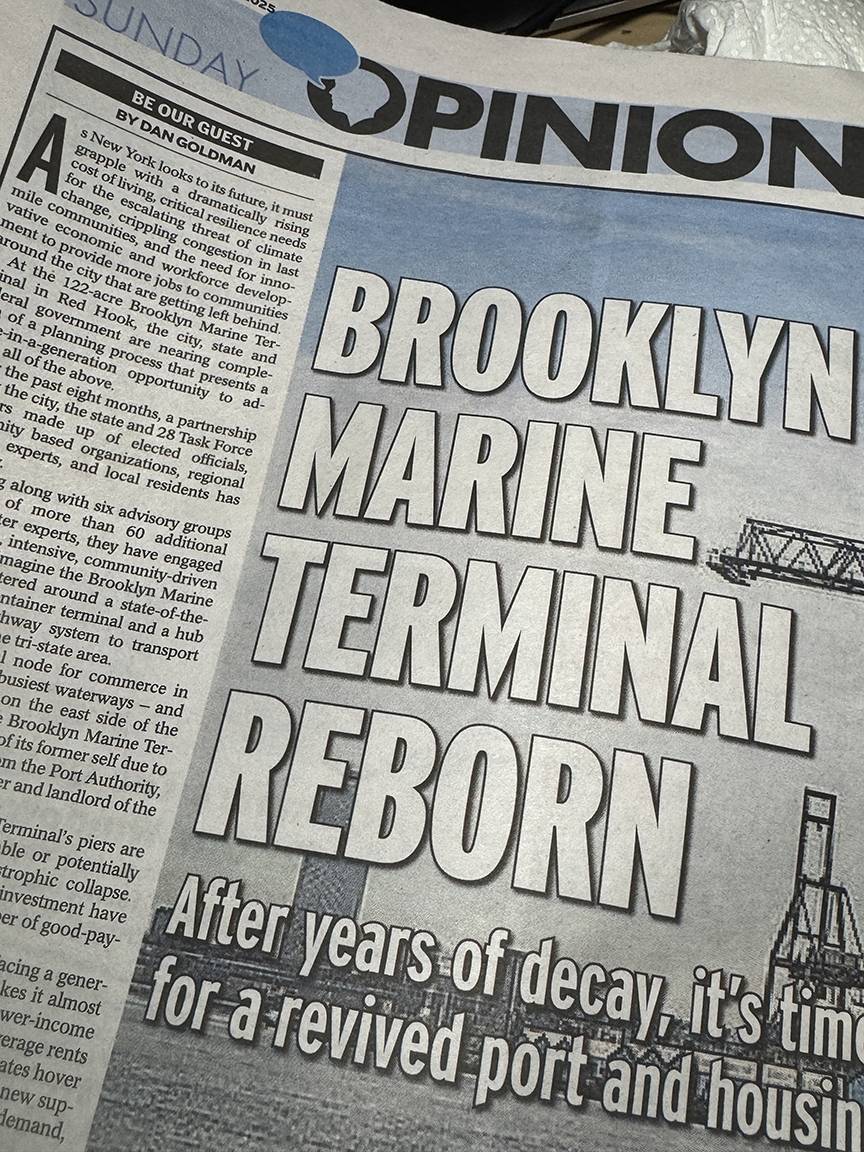
Some pedestrians who cross Van Brunt Street at Pioneer Street are likely to hold their breath.
Locally known as a dangerous crossing, the busy three-way intersection has already inspired community efforts to install a traffic signal. As Red Hook gains a ferry landing this month and the neighborhood absorbs more traffic, efforts for increased street safety remain in planning stages.
Data collected by NYPD Motor Vehicle Collisions shows thirteen people have been injured at the Pioneer-Van Brunt intersection due to traffic collisions since August 2015.
Around noon on May 8, a car struck a 35-year-old mother and her 3-year-old daughter at the intersection. A Tesla sedan, operated by a 24-year-old company employee, was turning left off of Pioneer onto Van Brunt when it struck the girl and her mother, who told police they were crossing Van Brunt westbound. The car’s view was obscured by trucks that continuously idle at that intersection.
“She sprinted out ahead of her mother, and the mother winds up being struck by the driver. The daughter tumbles into the mother, and they both fall down because the driver can’t stop quick enough,” reports Steve Farber, who lives above Bait and Tackle. He witnessed the aftermath of the collision. “By the time I looked out my window I could see the car with the mother and child basically underneath the front bumper. The mother [was] clutching the little girl in her arms, The passers-by ran down and told the mother and child not to move.”
Terry Scott, of Rebuilding Together, called 911. An ambulance arrived on the scene to treat the pedestrians, who Farber said were not seriously injured. Officers Rodriquez and Alba arrived to take statements. The mother and daughter were treated at Maimonides Hospital.
“We are very glad that no one was seriously injured, and we have been cooperating with the authorities who came to the scene to assist,” wrote a spokesperson for Tesla, a car dealership located four blocks from the intersection at 160 Van Brunt. “This incident did not involve a customer test drive, and we are conducting a thorough review of the incident with the Tesla employee involved.”
Autopilot was not a part of the collision, Tesla confirmed.

The May 8 incident is another accident that reaffirms a years-long community desire to gain a traffic signal at this intersection.
“Without any doubt, at an absolute minimum, we need an all-way stop,” says Farber of the busy intersection. But he notes that the all-day idling of delivery trucks on that stretch would render stop signs useless. “If there are trucks idling there, southbound traffic on Van Brunt will never, ever see the stop sign, so they’ll just shoot right through.”
Farber is not alone in calling for stoplights at that intersection.
John McGettrick, founder of the Red Hook Civic Association, has been organizing for a traffic signal at Van Brunt and Pioneer Streets for years.
“We want to bring as much pressure to bear on the city for this long-overlooked hazardous traffic situation,” said McGettrick. He has been circulating a petition within the community to support the installment of a traffic signal. He estimated the petition has already received around 400 signatures.
According to McGettrick, the Department of Transportation has yet to approve a stop light at the intersection because vehicular cross-traffic data found insufficient evidence to warrant one. However, a warrant can be overridden by number of accidents. “While we may not have the flow of traffic, we have the danger,” McGettrick pointed out, citing the intersection’s heavy flow of pedestrians.
McGettrick says the neighborhood received its last stop light after a vehicle fatally struck a woman on Van Brunt and Wolcott Streets in 2006.
“We do not need another situation like that,” says McGettrick. “This is preemptive safety, not catch-up after a tragedy, which very often happens.”
McGettrick plans to send the petition as part of a traffic signal request to the Borough Commissioner in early June, coinciding with the opening of NYC Ferry’s Red Hook landing.
Ferry will add traffic
Launching June 1, the commuter ferry will undoubtedly add to the congestion at Pioneer and Van Brunt Streets.
The Red Hook ferry landing at Atlantic Basin is a short walk from Van Brunt, a lively commercial street. Ferry riders are also likely to utilize Pioneer Street en route to the landing, as the road ends at Atlantic Basin.
NYC Ferry boats, provided by Hornblower, can hold up to 149 passengers per trip. According to scheduling information for the South Brooklyn route found on the NYC Ferry website, ferry riders can expect 50 boat trips daily on weekdays and 32 trips daily on weekends launching from Red Hook.
NYC Ferry expects the Atlantic Basin landing to serve over 6,000 people who live within a half-mile radius of the terminal. But less than a month into the Rockaway route that launched May 1, NYC Ferry reports, ridership has more than tripled the route’s original estimate.
The South Brooklyn route will operate year-round with the exception of the Governors Island stop, which only runs during summers.
Locals push for traffic signal
Red Hook resident Samantha Salvati lives a block from the Pioneer and Van Brunt intersection with her one-year-old child. She has witnessed traffic collisions at the intersection. “No one ever stops,” she says, referring to a sign that faces eastbound traffic on Pioneer Street.
Salvati is a strong supporter of a traffic signal, but says she’s unaware of community efforts to install one.
Kemo Elsayd, manager of Heba Deli and Superior Market on the Southeast corner of the intersection, has seen his share of harrowing incidents at the crossing. Elsayd has communicated with neighbors, police, and other community members about securing a stoplight for years without success. “This happens a lot over here,” he says, referring to accidents. “Nobody listens.”
Elsayd recalls a bus careening into a car at the intersection a year ago, causing the car to skid up on the sidewalk and nearly crash into his store. “I’ve been hit two or three times,” says Elsayd.
Wary of the accident-prone road outside his deli, Elsayd regularly accompanies an elderly friend across busy Van Brunt Street to purchase a slice at Mark’s Pizza in peace.
Mark’s Pizza manager Sammy Vitto is another proponent of the traffic signal. He crosses the intersection regularly, riding his motorcycle to the pizzeria.
“At this intersection? Yeah, they need a light in there. Pretty much every week there’s an accident there,” says Vitto. He notices that large trucks have a particularly hard time making turns at the cross streets. “Every time they take a turn, they take a car with them.”
Though he’s heard talk of organizing for a traffic signal, Vitto says he’s unsure of how that talk is moving forward.
On the Southwest corner of the intersection, Omaris Martinez owns O&B Unisex Hair Salon. During her ten years at the salon, Martinez says she’s seen many accidents from her corner. “I always had the idea [that a traffic signal was needed], but I didn’t know what to do or who to turn to about it,” says Martinez.
Next door to Martinez’s salon, Carmen Lorenzo owns Pioneer Street Supermarket, where she has worked for 30 years. “I think we need it,” says Lorenzo, at the mention of a stop light. When parked on Pioneer Street, her car has been bumped into multiple times.
Pedestrians, cyclists, and drivers use Pioneer Street to access Pioneer Works, a non-profit cultural center located a block from the busy intersection. Events at Pioneer Works draw crowds as large as 1,800, heightening traffic in the area.
Pioneer Works director Gabriel Florenz says he crosses the busy intersection multiple times a day. To him, a traffic signal is long overdue, but he also hopes for additional crosswalks in addition to the two crosswalks that currently run parallel to Pioneer Street.
Florenz worries about the addition of the NYC Ferry on June 1, located just a couple blocks away at Atlantic Basin. “We have to think about more tourists coming into this neighborhood who don’t know their way around, don’t know the streets, and that being a further hazard for more people,” he said. “It’s personal to Pioneer Works as far as making sure that people are safe who are coming and going from [the venue], but it’s also just a huge community issue.”
Bureaucratic steps
According to a Department of Transportation (DOT) spokesperson, requests to install a traffic signal are processed by the Borough Commissioner’s Office and reviewed by the office’s Signals division. These reviews can take up to 12 weeks.
“Following requests, DOT uses a detailed process called an intersection control study to determine if traffic signals or multi-way stop signs are appropriate for a location -taking into consideration crash history, traffic volumes, and existing speed limit and other traffic controls in the area,” they wrote. “We then compare our data to the warrants outlined in nationally recognized guidelines to determine if installing a traffic signal or a multi-way stop is feasible.”
DOT will not install a traffic signal or multi-way stop sign if data collected for the intersection control study does not meet the warrants. When this occurs, the department often pursues other ways to improve traffic conditions.
Accessible pedestrian signals – buttons that emit sounds and vibrations to direct blind or low-vision individuals – can be requested on traffic lights as an additional safety feature.
Before introducing add-ons to the traffic light like the accessible pedestrian signal, McGettrick says he first wants to secure commitment for the traffic signal.









